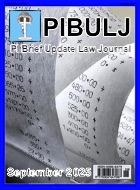Benjamin Hetherington v Raymond Fell & Anor [2025] EWHC 1487 (KB) - Philip Matthews, Temple Garden Chambers

15/07/25. In the case of Hetherington v Fell, the High Court dealt with a serious accident involving a cyclist, who was injured during a time trial event organized by the Ferryhill Wheelers Cycling Club.
Background
The accident occurred when the Claimant collided with a Mercedes driven by the Defendant, when the latter attempted to turn onto Butterwick Road from the A698 dual carriageway.
The Claimant alleged negligence against the Defendant, who denied liability. The Defendant subsequently brought a Part 20 claim against the cycling club, asserting that they were negligent in their risk assessment and safety measures during the event. The cycling club contested this claim, stating they had taken adequate precautions and denied any liability for the accident.
Issues
The Court identified several issues for determination:
- Whether the cycling club owed a duty of care to the Claimant;
- The scope and standard of that duty;
- Whether the club breached that duty;
- Whether any breach caused the accident; and
- How liability should be apportioned between the parties.
Judgment
I: Duty
The Court found that the cycling club did owe a duty of care to Hetherington. Ritchie J emphasised that the club, as event organisers, had a responsibility to ensure that the risks posed by third-party drivers were adequately assessed and mitigated.
II: Breach
The Court examined the risk assessments performed by the club and concluded that they had been conducted appropriately. Ritchie J ruled that the risk assessments carried out in 2007 and 2018 were suitable and sufficient, and the club had taken reasonable steps to inform drivers of the cycling event through signage and marshals.
III: Causation
The court determined that even if the club had breached its duty of care, such breaches would not have causatively impacted the accident. The evidence showed that the Defendant had failed to observe the warning signs and did not take appropriate care when crossing the carriageway, which was the primary cause of the collision.
Ritchie J found deemed the Defendant’s evidence to be unreliable. In particular, it was noted that the Defendant had failed to see the Claimant, despite the cyclist being visible in the final moments before impact.
Decision on Liability
Ultimately, the Court dismissed the Part 20 claim against the cycling club, ruling that they had acted reasonably given the circumstances. Ritchie J highlighted the challenges faced by volunteer organizations like the club in balancing safety with the enjoyment of cycling events.
Conclusion
The judgment underscored the importance of proper risk assessment and safety measures in sporting events, particularly on public roads. While recognising the duty of care owed by the cycling club, the Court found that they had fulfilled their obligations adequately and attributed the accident primarily to the negligence of the Defendant, who did not observe his surroundings despite clear visibility conditions. Thus, the Court found in favour of the cycling club, dismissing the claims against them.
Benjamin Hetherington v Raymond Fell & Anor [2025] EWHC 1487 (KB)
Image ©iStockphoto.com/olaser












![Appeal judge rules that credit hire company has no costs liability following a finding of fundamental dishonesty in personal injury case: RSA v. Fastrack Solutions Limited [2023] 4 WLUK 92 - David Bowden, Erimus Chambers](/content/images/resized/images/stories/carkeys_72_72.jpg)


